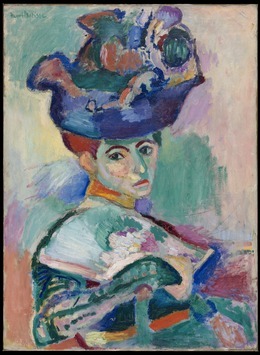 |
Femme au chapeau by Henri Matisse
|
The list of artists Weill championed goes extraordinarily on, full of hundreds of names—some blue-chip, some forgotten. Between 1901, when she opened Galerie Berthe Weill, and 1941, when she shuttered the space due to rising anti-Semitism and the onset of World War II, she hosted countless shows. “We took the risk of going modern,” the dealer wrote in her memoir.
Her risk-taking was admirable, but it didn’t always pay off. There wasn’t a thriving market for artists who were just starting out—or for women artists. And the painters Weill did manage to sell weren’t reliable sources of income, either. As her artists grew higher in profile thanks to shows with Weill, they left her shop for established dealers like Ambroise Vollard, Paul Rosenberg, and Daniel-Henry Kahnweiler. These gallerists could offer stipends and the security of an exclusive contract—expenses Weill simply couldn’t afford without resorting to showing recognized, safe artists (something the prickly and opinionated dealer was against).
“Weill [was] a discoverer,” Le Morvan explained. “The first [access point] to the market for artists who are then spotted by galleries of larger sizes which offer better prices.” Weill was constantly replenishing her roster as successful artists moved to more established galleries, a pattern still playing out for scrappy and visionary dealers today.
Share“She’s doing something innovative and she’s in unknown territory, and it’s not easy but she’s doing it,” said Robert McD. Parker, an independent art scholar on a team mounting an upcoming Berthe Weill exhibition. The traveling show will include around 80 works that passed through Galerie Berthe Weill—though it won’t display them on clotheslines like she would do when she ran out of wall space. The exhibition will open at the Montreal Museum of Fine Arts in 2022 and at NYU’s Grey Art Gallery the following year, and it may travel to additional venues. (Read more.)

















No comments:
Post a Comment